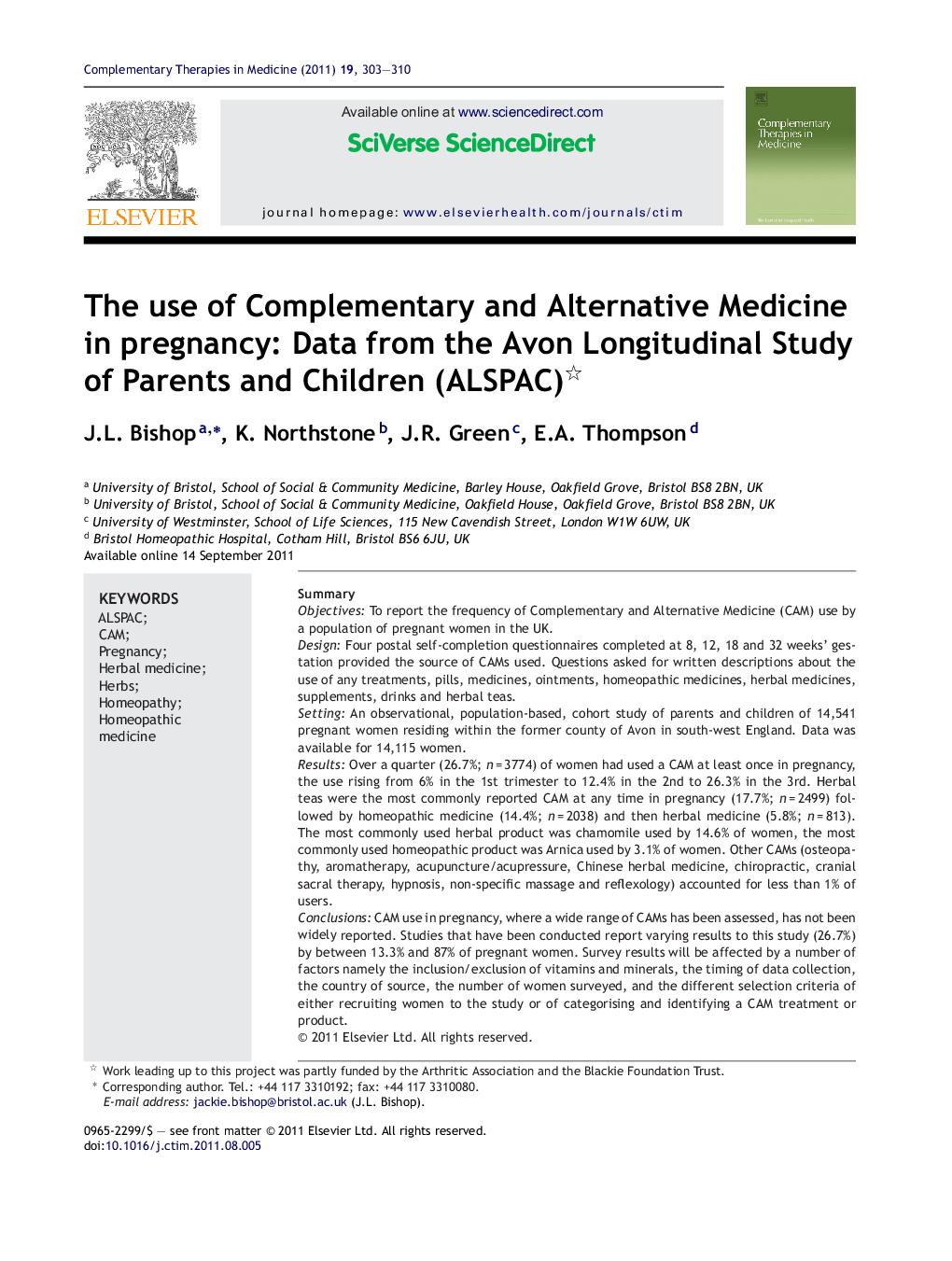| کد مقاله | کد نشریه | سال انتشار | مقاله انگلیسی | نسخه تمام متن |
|---|---|---|---|---|
| 2629229 | 1136543 | 2011 | 8 صفحه PDF | دانلود رایگان |

SummaryObjectivesTo report the frequency of Complementary and Alternative Medicine (CAM) use by a population of pregnant women in the UK.DesignFour postal self-completion questionnaires completed at 8, 12, 18 and 32 weeks’ gestation provided the source of CAMs used. Questions asked for written descriptions about the use of any treatments, pills, medicines, ointments, homeopathic medicines, herbal medicines, supplements, drinks and herbal teas.SettingAn observational, population-based, cohort study of parents and children of 14,541 pregnant women residing within the former county of Avon in south-west England. Data was available for 14,115 women.ResultsOver a quarter (26.7%; n = 3774) of women had used a CAM at least once in pregnancy, the use rising from 6% in the 1st trimester to 12.4% in the 2nd to 26.3% in the 3rd. Herbal teas were the most commonly reported CAM at any time in pregnancy (17.7%; n = 2499) followed by homeopathic medicine (14.4%; n = 2038) and then herbal medicine (5.8%; n = 813). The most commonly used herbal product was chamomile used by 14.6% of women, the most commonly used homeopathic product was Arnica used by 3.1% of women. Other CAMs (osteopathy, aromatherapy, acupuncture/acupressure, Chinese herbal medicine, chiropractic, cranial sacral therapy, hypnosis, non-specific massage and reflexology) accounted for less than 1% of users.ConclusionsCAM use in pregnancy, where a wide range of CAMs has been assessed, has not been widely reported. Studies that have been conducted report varying results to this study (26.7%) by between 13.3% and 87% of pregnant women. Survey results will be affected by a number of factors namely the inclusion/exclusion of vitamins and minerals, the timing of data collection, the country of source, the number of women surveyed, and the different selection criteria of either recruiting women to the study or of categorising and identifying a CAM treatment or product.
Journal: Complementary Therapies in Medicine - Volume 19, Issue 6, December 2011, Pages 303–310